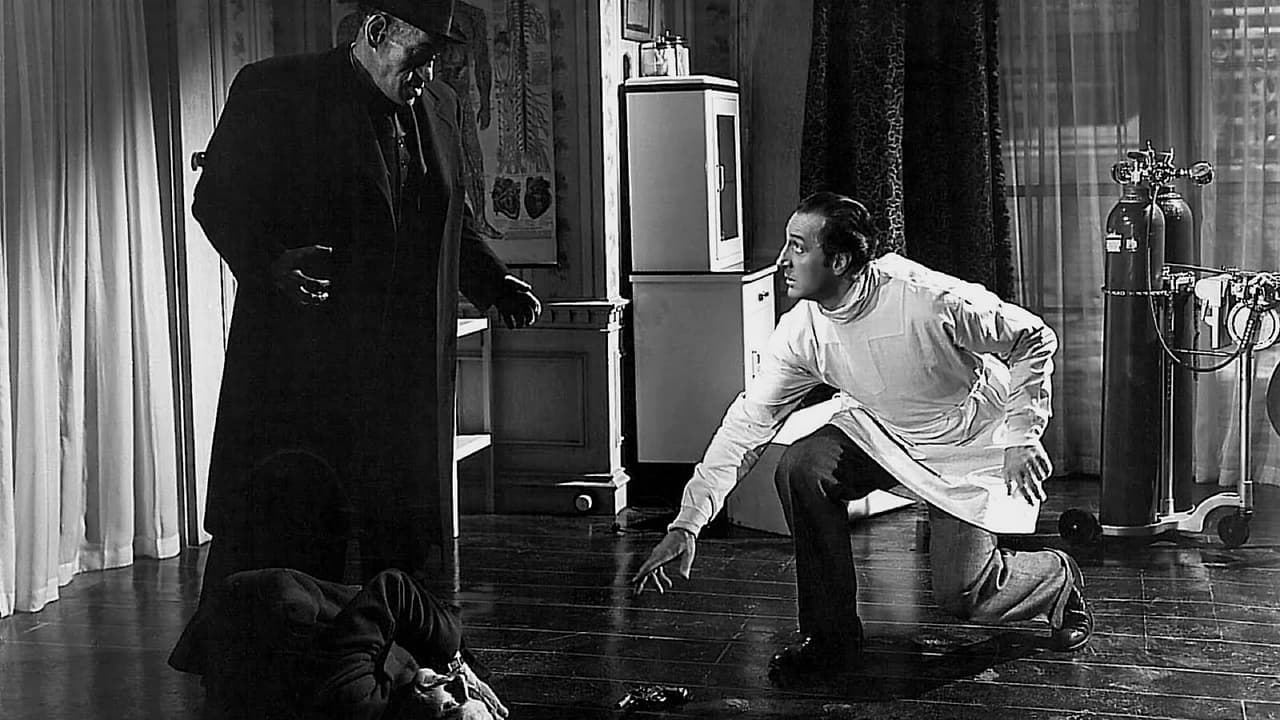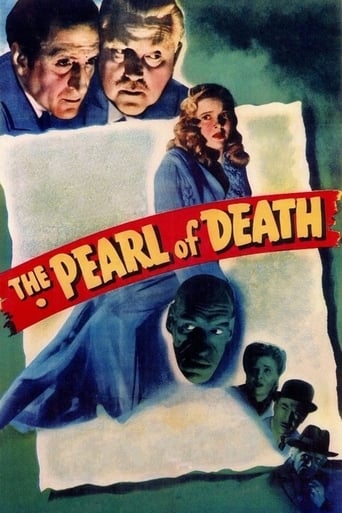

The elusive Borgia Pearl, shards of broken china, a string of corpses with broken lumbar vertebra. "The Pearl of Death" brings back Sherlock Holmes, Doctor Watson, Inspector Lestrade, and Mrs. Hudson to retrieve an enormous pearl stolen from the Regent Museum. While Holmes initially saves the valuable piece from intended theft aboard the Dover Ferry, he is unintentionally responsible for its subsequent loss from the museum and becomes intent on rescuing the piece once again. The seventh entry in Universal Studio's Holmes series is not as much a who-dunnit as a where-is-it mystery? A veteran of previous Holmes screenplays, Bertram Millhauser based his script on the Conan Doyle story, "The Adventure of the Six Napoleons," and the results, while not quite as sterling as "The Scarlet Claw," are still clever and entertaining. Millhauser gives Nigel Bruce an amusing scene in which Watson thinks he recognizes a visitor from a prior case; however, the good doctor manages to be wrong on every point about the murder weapon, the victim, and the identity of the visitor, yet blusters on attempting to imitate Holmes's logical reasoning and acute observation.Nigel Bruce shines throughout and grumbles more than usual about being bossed by Holmes. Basil Rathbone is perhaps more authoritative and arrogant than usual; however, the master sleuth has been justly accused of responsibility in the loss of the pearl, owing to his air of superiority and his aim to expose a flaw in the museum's security. In support of Rathbone and Bruce, Miles Mander and Ian Wolfe repeat from "The Scarlet Claw," and Evelyn Ankers returns from "The Voice of Terror" to play a key role. Roy William Neill again produces and directs, and Virgil Miller, veteran cinematographer of numerous Charlie Chan and Mr. Moto movies, shot the film with appropriate atmosphere. The present-day setting has become unobtrusive; despite the use of automobiles, telephones, and electric alarms, the aura of a timeless Victorian era lingers at 221B Baker Street.Certainly among the better entries in the Holmes series, "The Pearl of Death" is entertaining and intelligent. The players are at their best, and Holmes is given the opportunity for a final philosophical comment before fadeout. Although Holmes's superior intellect and self confidence are initially dented, the master sleuth regains his footing and proves himself once again.
... View MoreThose Borgias and their cursed pearls. This is about the smuggling, regaining, and losing of a pearl that has a curse on it. Holmes, who at times is so full of himself, sets up a situation where the big marble gets stolen from the museum. He then must get it back. A career criminal, his female associate, and a back breaking goon known as the Oxton Creeper (who appeared in at least one other movie) have the thing and Holmes is on their trail. Now you have the likes of LeStrade, smugly reminding Holmes what an idiot he is (he's been upstaged for so long) and Watson who on two occasions hides the pearl in his mouth (God forbid the process of retrieval had he swallowed it). Since this is based on the story "The Six Napoleons," we know that eventually the pearl has been hidden in the plaster bust of one of six Napoleon statuettes. The "Creeper" has been sent to the homes of the unfortunate purchasers, breaking their backs, and then breaking their china. This is at the bidding of the bad guys. This is one episode where they allow Watson to have a thread of intelligence. He is instrumental in the solving of the crime. I don't know what Nigel Bruce was like in non-Holmes movies, but I have a feeling he was a pretty good actor, given the chance. Once again, Holmes feels the need at the end to make a speech about greed and avarice. When I was a small child, we used to watch Westerns where, at the conclusion, the cowboy hero would tell us to mind our parents, eat our vegetables, and go to church and Sunday school. I am reminded of these guys when I listen to Rathbone's dronings.
... View MoreBasil Rathbone's sixth turn as Sherlock Holmes, with Nigel Bruce as his sidekick, Dr. Watson, is as enjoyable as the rest. Holmes says lines that would sound ridiculous coming from another, but they work for Rathbone, as does Bruce as his partner.Another murder mystery involving some Napoleon busts and a creepy killer that breaks backs. He reminds you of Frankenstein. Horror in a murder mystery is a welcome addition.These films are always a pleasure to watch and they retain their charm even after 60 years have past. Direction by Director:Roy William Neill was excellent.
... View More"One of two things has happened. Either the woman he bumped into was an accomplice, in which case she has the pearl, or he managed somehow to conceal it in his flight." The pearl, of course, is the cursed Borgia Pearl, an object of rich men's lust. The "he" is Giles Conover (Miles Mander), a master criminal as cruel as he is clever, as contemptuous of men as he is unmoved by women. The Borgia Pearl has been the object of criminal stratagems since it arrived in London for display in the British Museum. The director of the museum is immensely proud of how he has harnessed electricity to warn of any untoward action involving the museum's objects. But what happens when Sherlock Holmes (Basil Rathbone) apparently makes a mistake. And what happens when the electricity doesn't work. It will be Sherlock Holmes, aided by his game but confused partner, Watson (Nigel Bruce), against Giles Conover. Holmes makes his disdain for Conover clear. "I don't like the smell of you -- an underground smell, the sick sweetness of decay. You haven't robbed and killed merely for the game like any ordinary halfway decent thug. No, you're in love with cruelty for it's own sake." Little does Holmes realize that Conover has a creature of his own...a brute whose face is the result of a disorder of the pituitary gland. Watson might call it acromegaly. Most laymen would say it's the Easter Island Statue Syndrome. It's not long before Holmes must deal not only with Conover, but also with this creature...the Hoxton Creeper (Rondo Hatton). "A monster, Watson," Holmes says, "with the chest of a buffalo and the arms of a gorilla. His particular method of murder is back breaking. And it's always the same...the third lumbar vertebrae." "How horrible," says Watson. Does Sherlock Holmes best the Creeper? Does he recover the Borgia Pearl? Does Conover taste the bitter brew of utter defeat? You'll get no spoilers from me. Some think macaroni and cheese is the perfect comfort for what ails you. I think it's Rathbone and Bruce. People can argue about which actor has been the best Sherlock Holmes, but there is something about Rathbone's style, earnestness, profile and line delivery that makes me sit back and smile every time I watch him play The Great Detective. All that Victorian gaslight, fog and cobblestones help, too. With some strange alchemy, the Holmes movies with Rathbone have turned into an elixir of kitsch, style, remembrance of things past, satisfaction and noble causes. Mac and cheese doesn't come close.
... View More